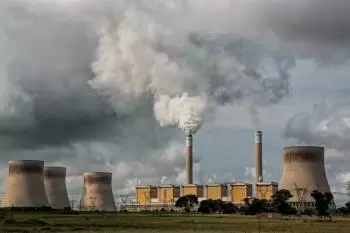
Electric energy is present everywhere around us. Right now, the screen you are reading this article on is powered by electrical power.
Electrical energy is the energy of electrical particles (usually electrons) that move through an electrical conductor. But how is electricity produced? How are these particles set in motion?
According to the law of conservation of energy, energy cannot be created or destroyed, it can only be transformed. Therefore, we cannot "create" electrical energy, but we can use other primary energy to convert it into electricity.
There are two types of electricity:
-
Static electricity occurs when an atom has a different number of positive and negative particles. For example, if we rub a balloon with wool, part of the electrons in the wool pass to the balloon, increasing the negative charges.
-
Dynamic electricity is what we use daily in electronic devices, it consists of an orderly flow of electrons through a conductor. In this article we will focus on dynamic power generation.
Generation of electricity through renewable energy
Renewable energies are those ways of generating electricity using a renewable source, that is, inexhaustible sources (solar radiation, wind, etc.).
The main sources of renewable energy are:
-
Photovoltaic solar energy: a set of solar panels capture the energy of light to jump an electron from a material called silicon. The sum of these electrons generates an electric current.
-
Solar thermal energy: a set of mirrors concentrate solar radiation at one point. The temperature at this point gets very high and is used to generate steam to drive a turbine connected to an electrical generator.
-
Wind energy: wind farms are sets of windmills that capture the force of the wind to drive a wind turbine. This turbine is connected to a generator that supplies electricity to the electrical grid.
-
Geothermal energy: This type of energy is used to obtain heat from the subsoil to heat homes but also as a source of heat for geothermal power plants. This type of plant works the same as other conventional steam plants but using a different heat source.
-
Tidal energy and wave energy: These two types of renewable energy use the movement of sea water to generate electrical energy. In particular, it works with tides, ocean currents, and waves.
-
Biomass energy: this type of energy obtains energy from the combustion of organic matter. The organic matter used are products, residues and waste from agricultural activities.
The main advantage of renewable energies is that (with the exception of biomass) they do not generate greenhouse gases. In other words, they are energies that do not contribute to climate change.
Generation of electrical energy through non-renewable sources
Non-renewable energy sources are those that use resources that are not regenerated quickly enough to compensate for the consumption that is made.
The main non-renewable energy sources are:
-
Fossil fuels: Conventional power plants use fossil fuels to generate steam and drive a turbine connected to an electrical generator. Generally, the fuels most used in this type of power plant are coal, natural gas and oil.
-
Nuclear power: nuclear power plants work the same as a conventional steam power plant. The difference is that instead of using fossil fuels they obtain heat through nuclear energy reactions.
-
Electrochemical energy: This type of energy converts chemical energy into electricity, just like in a battery.
Generation of electricity through nuclear energy
The process to obtain electricity through nuclear energy is the result of a thermodynamic and mechanical process.
A nuclear power plant has the objective of transforming the internal energy of uranium atoms into electrical energy. Uranium is a chemical element on the periodic table with a very high atomic number, which makes it a very unstable element.
This process is carried out by following the following steps:
-
At first, the nuclear reactor generates fission reactions that emit a large amount of heat.
-
With all this thermal energy, high pressure steam is obtained.
-
The steam, thanks to its high pressure, drives the steam turbines of the power plant.
-
In this way, mechanical energy is obtained, the energy of rotation of a shaft.
-
Finally, the person in charge of transforming mechanical energy into electrical energy is the electrical generator.